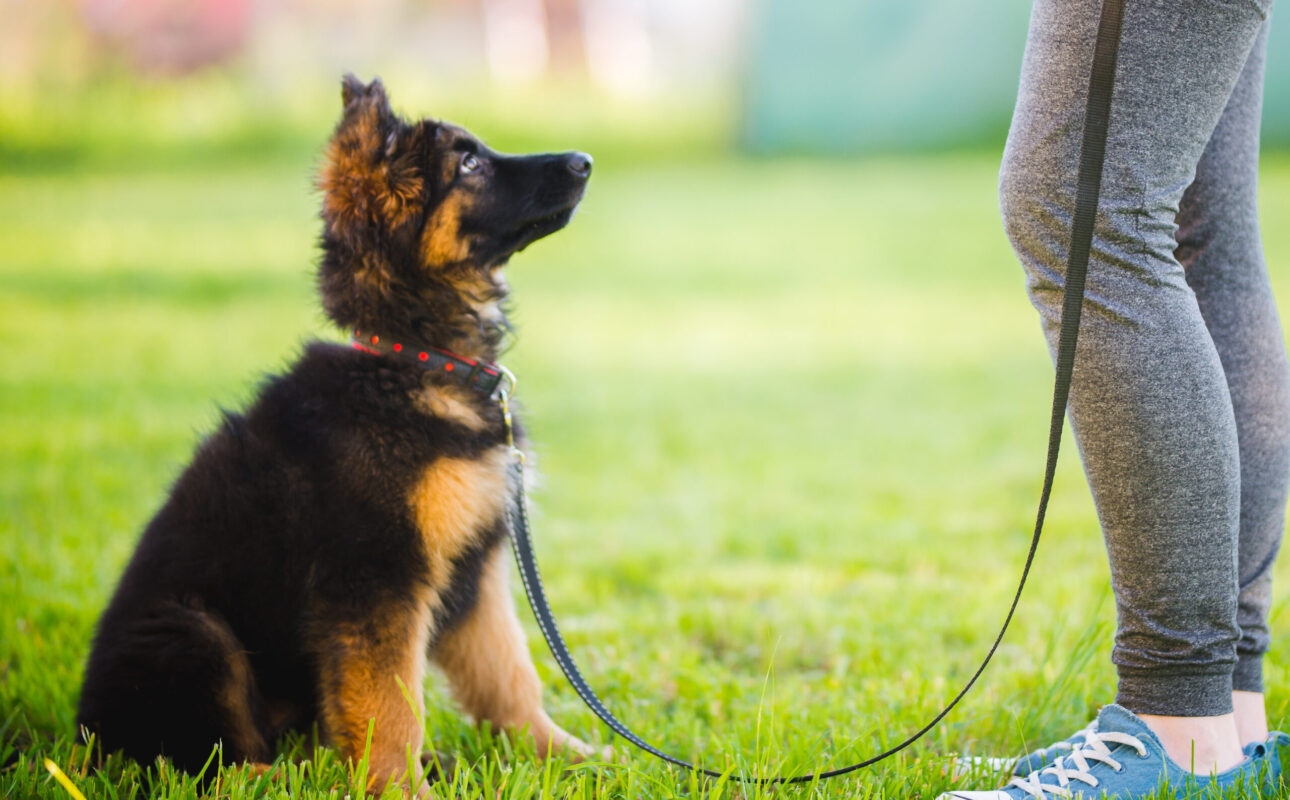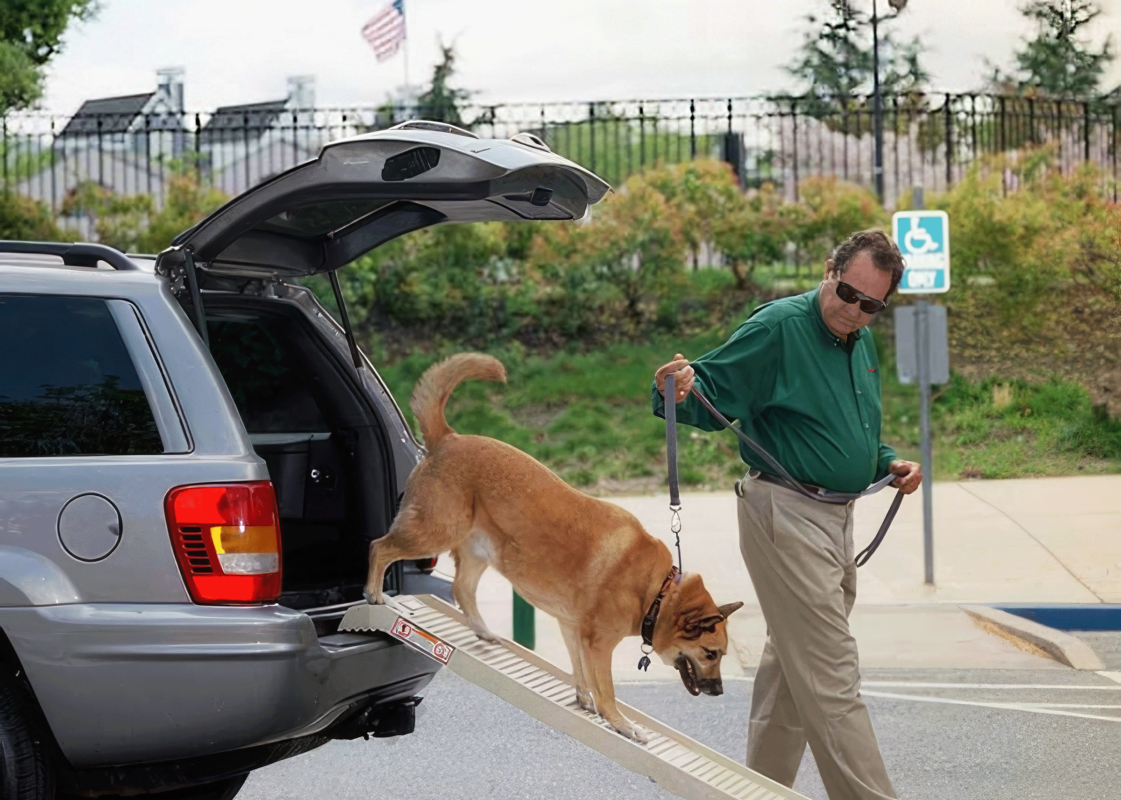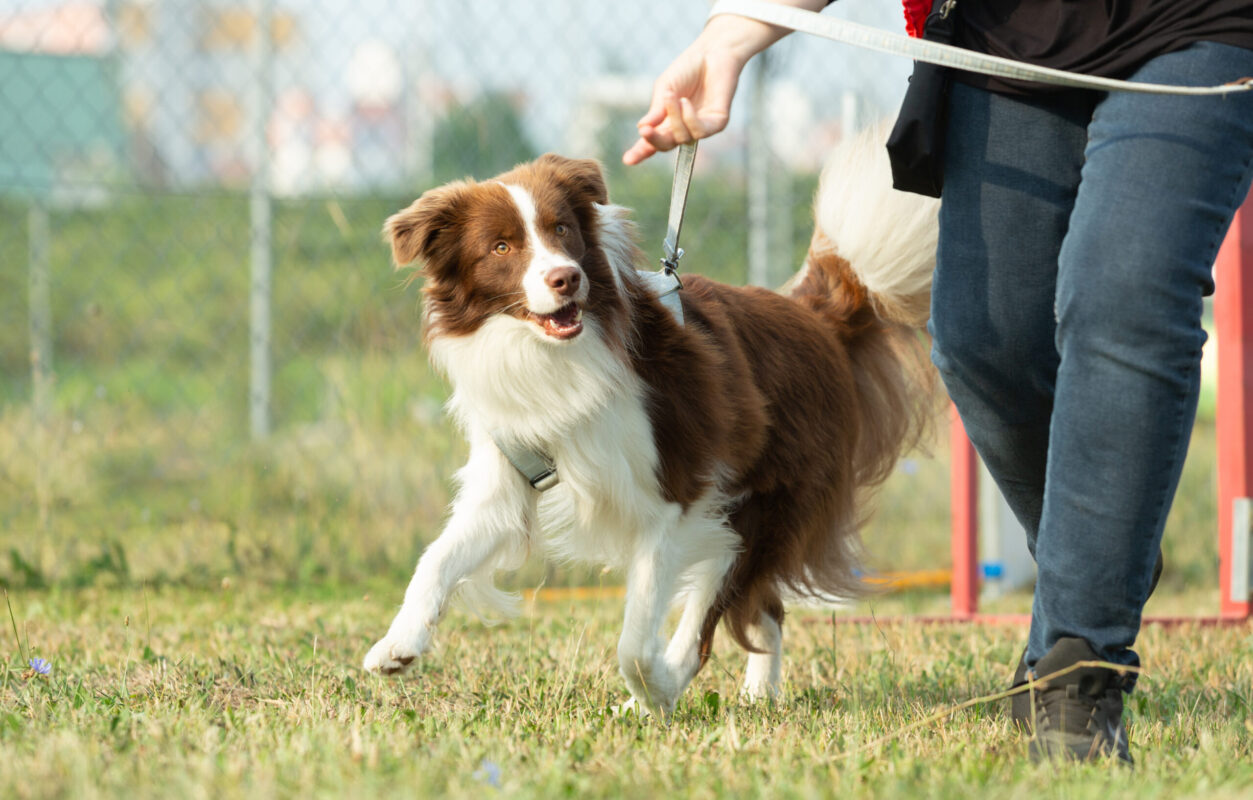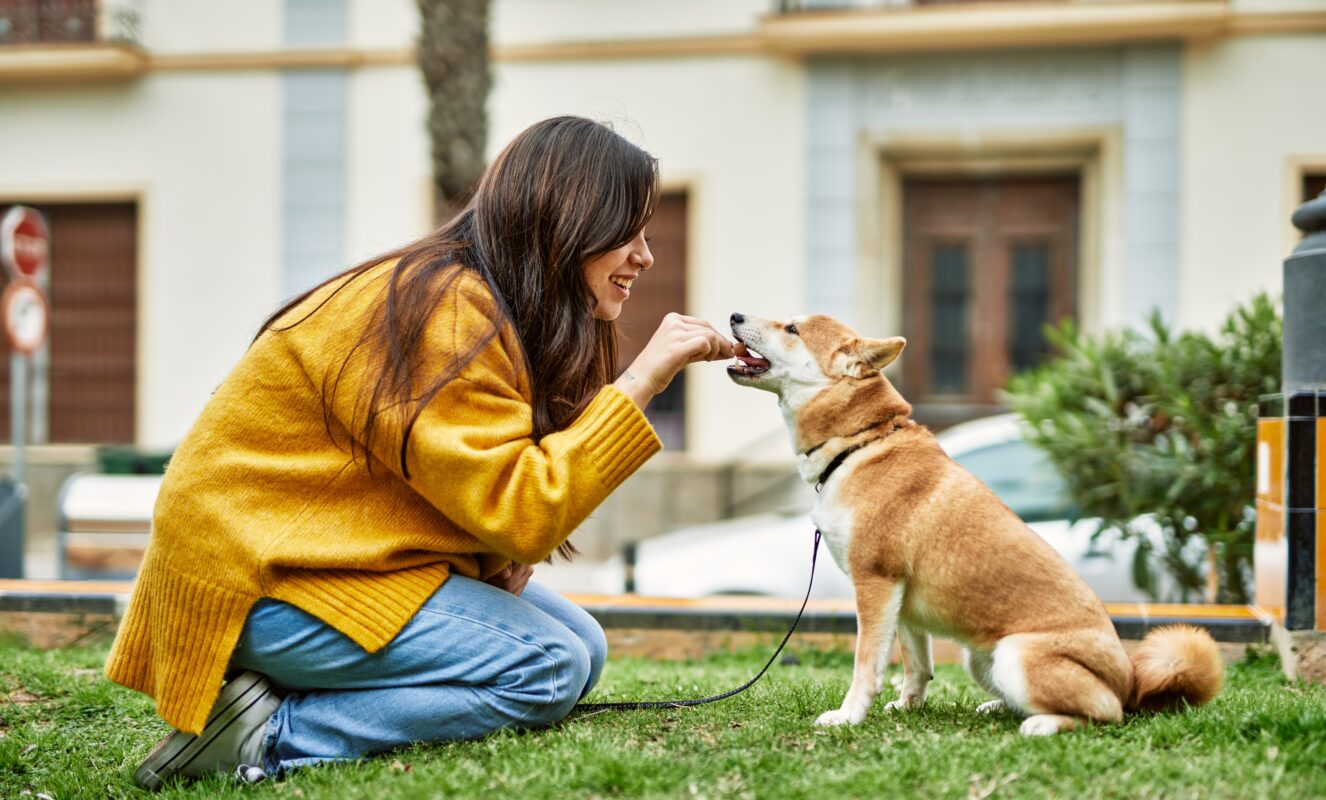-
- SHOP
- Pool Ramp for Dogs
- For People
- For Pets
- Gallery
- Blog
- Our Company
- Cart
- Login
- Newsletter
- Free US Shipping on orders over $79!
Whether your dog is getting older, recently had surgery, or is just small, a dog ramp can be an invaluable tool to help your pup access harder-to-reach places such as vehicles, furniture, over steps, or even the pool. You know your dog will greatly benefit from a ramp, but they refuse to use it. So what do you do?
Don’t fear, because PetStep is here! While we’ve previously published tips for training dogs to use the PetStep ramp, this blog will go into more detail on how to get even the most stubborn of pups comfortable with using a pet ramp.
Choosing the right pet ramp is crucial, especially if your dog is hesitant to use one. A ramp that suits your dog’s specific needs can make a significant difference in their willingness to use it and their overall comfort and safety. The right ramp will be sturdy and stable, providing your dog with a secure surface to walk on without fear of slipping or tipping over. This stability is essential in building your dog’s confidence, particularly if they are already wary of new objects or experiences.
Moreover, the appropriate ramp should be the right size and incline for your dog’s size and mobility level. A ramp that is too steep can be intimidating and physically challenging, while one that is too narrow may not provide enough space for your dog to feel comfortable. Additionally, a ramp with a non-slip surface is essential to prevent accidents, especially for older dogs or those with mobility issues. This is also true when selecting a pool ramp for your dog. By choosing a ramp that meets these criteria, you create a positive experience for your dog, making it more likely they will use the ramp regularly, thereby enhancing their mobility and quality of life.
We go into more detail about how to select the best dog ramp here.

Gradually introducing a dog ramp is essential when you have a stubborn dog who may be resistant to new things. Start by placing the ramp flat on the ground, without any incline, in an area where your dog feels comfortable and relaxed. Allow your dog to explore the ramp at their own pace, using treats and praise to create a positive association. You can make this step more enjoyable for you and your pup by rewarding them every time they show interest in or step onto the ramp, reinforcing that the ramp is a safe place.
Once your dog is comfortable with the flat ramp, gradually introduce a small incline, even just a few inches at first. Encourage your dog to walk up and down the ramp by leading them with treats or their favorite toy. Walk alongside your dog to provide support and confidence, and ensure the ramp is stable and secure to prevent any movement that could startle them. Be patient and avoid rushing the process, as this can increase resistance. By taking small steps and maintaining a positive, encouraging attitude, your dog will gradually build confidence and become a pet ramp master in no time!

Once your pup has become more comfortable with walking on the ramp when flat or very low to the ground, it’s time to start increasing the incline. Gradually increase the incline at a low angle and allow your dog to get used to the new position. Use treats and verbal praise to encourage them to walk up and down the ramp. Be sure to stand beside the ramp to provide support and reassurance. This gradual approach helps your dog adjust without feeling overwhelmed or frightened.
As your dog becomes more comfortable with the slight incline, you can incrementally increase the angle of the ramp. Make each adjustment small and give your dog plenty of time to practice at each new height. Patience is key here! Rushing the process can lead to setbacks if your dog becomes anxious or reluctant. By progressively increasing the incline and maintaining a positive and supportive training environment, your dog will build the confidence and skills needed to use the ramp safely and comfortably at its full height.
Incorporating commands like “up” or “ramp” while your dog is on the ramp can create a signal for when your dog should use it. Consistently using commands during training helps your dog understand what is expected of them. Over time, your dog will associate the command with using the ramp, and all you’ll have to say is “up” for them to use it, if at all!

Practicing regularly is essential when training your dog to use a pet ramp, especially if your dog is resistant to using a ramp. Consistent practice sessions allow your dog to become familiar with the ramp and the act of using it, reducing anxiety and hesitation. Just like any other skill, repeated exposure and positive experiences make the activity more routine and less intimidating for your furry friend. By practicing daily, you create a predictable pattern that helps your dog understand that the ramp is a normal part of their environment and routine.
Furthermore, regular practice helps your pup develop the necessary physical coordination and muscle memory to make using the ramp an absolute breeze. Each practice session provides an opportunity for your dog to improve their balance and agility, making the process of walking up and down the ramp smoother and more natural. This is particularly important for older dogs or those with mobility issues, like post-surgery pups or dogs with hip dysplasia or arthritis. By integrating the ramp into your dog’s daily activities and consistently encouraging them with treats and praise, you ensure that using the ramp becomes a comfortable and automatic behavior, enhancing their mobility and overall well-being.

By this step, your pup has become comfortable with using the ramp at varying inclines and it’s time to incorporate it in your daily or weekly routines. Whether you’re using the ramp in your car, up to furniture, over steps, or even in the pool, continuing positive reinforcement will help solidify the ramp as a regular part of your dog’s environment, reducing any residual hesitation or anxiety.
Moreover, consistently using the pet ramp helps maintain your dog’s physical health, especially for older dogs or those with mobility issues. Ramps reduce the strain on joints and muscles that can occur from jumping or climbing, preventing potential injuries. By making the ramp a routine part of your dog’s life, you ensure they benefit from its use, promoting better mobility and reducing the risk of accidents.
In conclusion, getting your hesitant (or even downright stubborn) dog to successfully use a ramp requires patience, consistency, and positive reinforcement. By choosing the right ramp tailored to your dog’s size and needs, introducing it gradually, and practicing consistently, you can create a positive and stress-free experience. By following these steps, you’ll ensure that your dog can comfortably and confidently use the ramp, improving their mobility and quality of life. Remember, the journey to success may take time, but with persistence and encouragement, your dog will soon master the ramp!